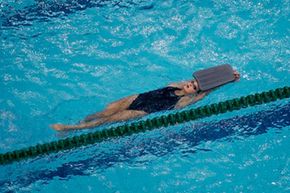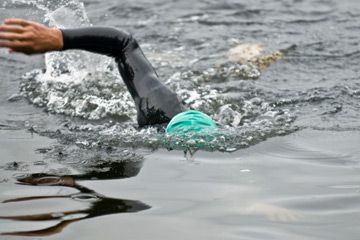If you've been to a community pool or aquatic center, you've probably seen them stacked against a wall by the dozens, maybe near a pile of swim fins. They're kickboards, and they can be a great help for swimmers (both new and experienced) if used properly.
Kickboards are made of foam and float effortlessly. They're usually pretty inexpensive -- that's how the community pool can afford to have so many of them laying around -- and they're more durable than you might think, even in chlorinated water. The boards at the local pool are often available to borrow -- that is, if you don't want to buy your own.
Advertisement
Kickboards have one curved end (that's the front) and a squared-off end (that's the rear). The basic position for using a kickboard is to rest your elbows near the square end and grip the rounded end of the board with your hands, or as close to this position as you can get, depending on how long your forearms are. You can also grip the very back of the board and extend your entire body in the water, including your arms. If you find yourself fighting the kickboard in the water, which is common for beginners, turn the board sideways to make it easier, or find a smaller board to use.
There are a few pointers to remember when you're using a kickboard to train, no matter what your swimming skill level happens to be. Ellen Wallin, a summer swim league coach with Portland Parks and Recreation in Portland, Ore., says:
- Stretch your body out to more closely approximate the position of the body while swimming without the board.
- Don't lean the weight of your body on the kickboard. "When you're comfortable in the water, there's no excuse for leaning."
- Don't lift your body out of the water, which makes the spine curve in an uncomfortable position.
Now that you know how to properly use a kickboard, what can you actually do with it in the water? We'll tell you on the next page as we look at a few basic kickboard workouts.
Advertisement




